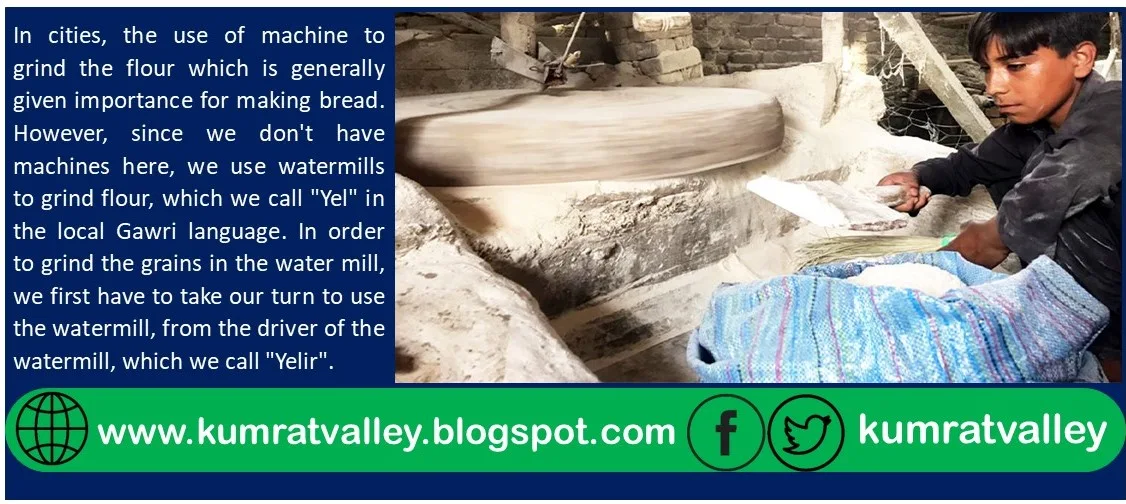Watermills in Kumrat Valley Dir
Upper.
In cities, the use of machine to
grind the flour which is generally given importance for making bread. However,
since we don't have machines here, we use watermills to grind flour, which we
call "Yel" in the local Gawri language. In order to grind the grains
in the water mill, we first have to take our turn to use the watermill, from
the driver of the watermill, which we call "Yelir". We have to wait
for our turn as no one can grind their grains without being given a turn.
Every year, from October to
November, people bring their own maize grains, grind them in their turn and store
them for the winter season. During heavy snowfall, we are confined to homes and
use the stored food. The watermill is set up on flowing streams with high
speed, known as "Nadi Nalos". The watermill does not require
electricity, petrol, or diesel to operate as it runs on running water. There
are two large stones for grinding flour placed on top of each other, and below
them is a wooden fan-like device called "Pashool".
Water is poured onto the Pashool
from a height, and it starts rotating. In this fan-like Pashool, a strong
wooden stick is attached, which is firmly fitted between the two stones with
great strength. We, the local people, call it "Thoom".
When water falls on the Pashool,
it starts rotating, causing the Thoom to start spinning. Similarly, the upper
stone's support also begins to rotate. There is a box-like structure where the
grains are poured, which we call "Dador". Through a small wooden
canal attached to the Dador, called "Dadak", the grains pass between
the two stones. And they get crushed and converted into flour. One end of the
Dadak is attached to the upper stone, so when the stone rotates, the Dadak also
moves, and in the same way, the grains automatically move between the stones'
supports.
A strong thread is tied with the Dadak to control the speed of the grains. When the grains are ground and ready, they are put into a sack with the help of a manual device called "Lavli". We have been using these watermill for centuries. In the autumn season, our watermills run for twenty-four hours a day. That's why when it's someone's turn at night, they take their friends, companions, a Sitar (a Guitar like instrument for music) and a flute with them because the nights in winters tend to be longer. The specific sound of the millstone, along with the sound of the sittar or lantern, and the folk songs, create a mysterious environment around.











